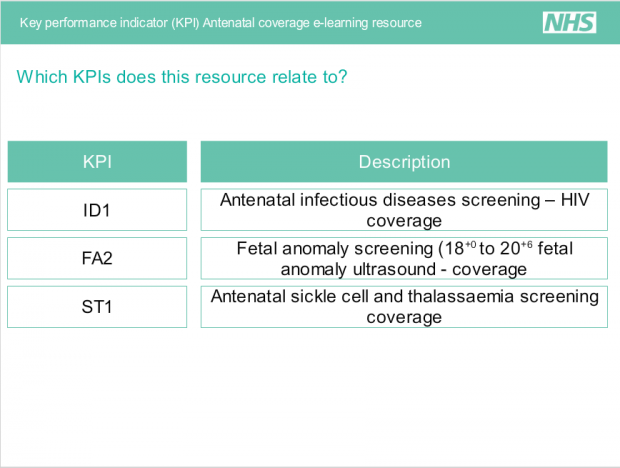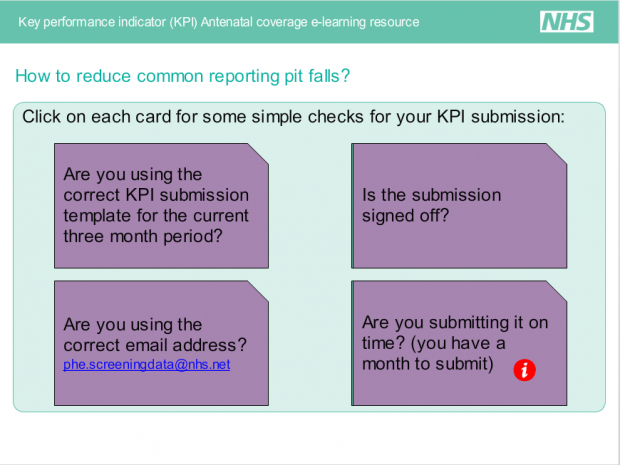We use key performance indicator (KPI) data to measure how the NHS screening programmes are performing.
Screening providers submit this data which aims to give a high level overview of programme quality.
We have 3 KPIs that relate to the coverage of antenatal screening. They are:
- ID1- Antenatal infectious disease screening – HIV coverage
- FA2- Fetal anomaly screening – ultrasound coverage
- ST1- Antenatal sickle cell and thalassaemia screening – coverage

Providers have worked very hard in recent years to submit data on these KPIs.
They face many challenges when submitting this data. For example, they may have to deal with multiple IT systems that do not speak to each other. Competing priorities can also lead to time pressures.
In addition, some of the KPI definitions can be hard to understand. That is why we are today launching a simple, short and snappy e-resource. This resource helps providers better understand the KPI definitions and how to do the counting – for example, how to work out the number of exclusions.
To access the new resource, first register to access the e-learning for healthcare platform. Scroll to the Public Health section and select Quality assurance in NHS Screening.

It’s very important that providers don’t view the KPI data submission simply as a data collection exercise. Every number relates to an individual woman going through the screening pathway. The process of submitting the data will help providers determine if that pathway is operating safely or not. For example, are women being missed?
If a provider discovers weaknesses in their pathway this should prompt local action to make sure the right women start on the pathway and that all women who start the pathway complete it.
We hope the new e-resource will help ensure a safe, high quality antenatal screening pathway for all pregnant women.
PHE Screening blog
PHE Screening BLOG articles provide up to date news from all NHS screening programmes – replacing our previously published newsletters.
You can register to receive updates direct to your inbox, so there’s no need to keep checking for new blog articles.
2 comments
Comment by Irene Stratton posted on
I wonder whether you've seen this:
http://www.bbc.co.uk/news/health-39341411
There are several terms in this which would not be clear to everyone in screening, never mind the public.
On the FA2 line of one of the sample screens there's a missing closing bracket. I find it rather depressing that there are errors like this in teaching materials. Are they not checked by several people?
Comment by Mike Harris posted on
Thank you Irene,
We aim to make sure information about screening for public and professionals is clear, concise and accurate by writing in plain English. This is an ongoing challenge and we do seek to improve existing publications where necessary. Thank you for spotting the missing closing bracket. This error is being rectified.
Best wishes,